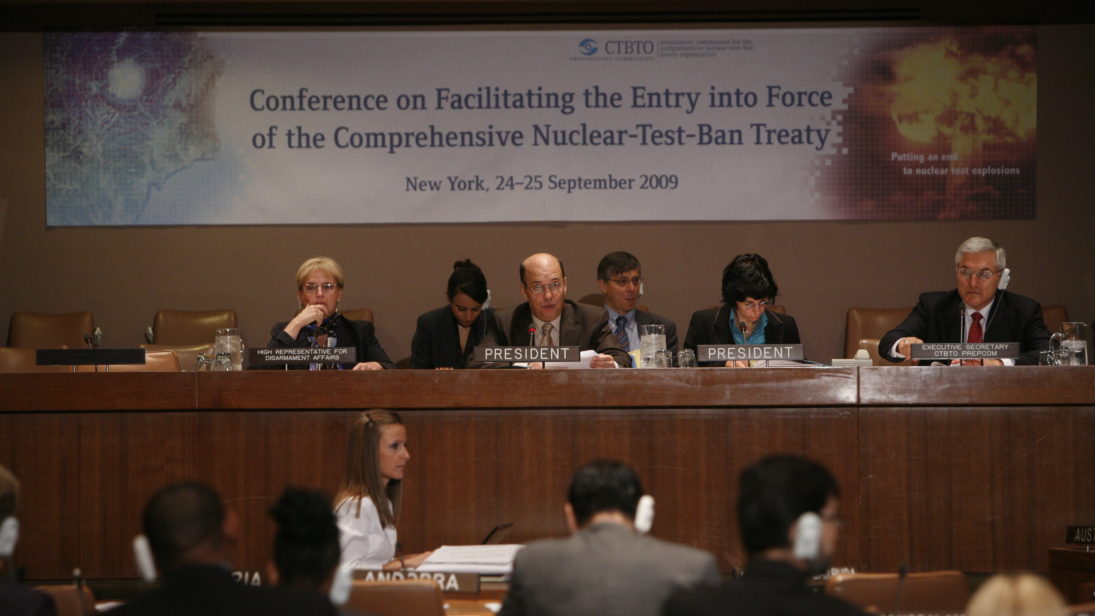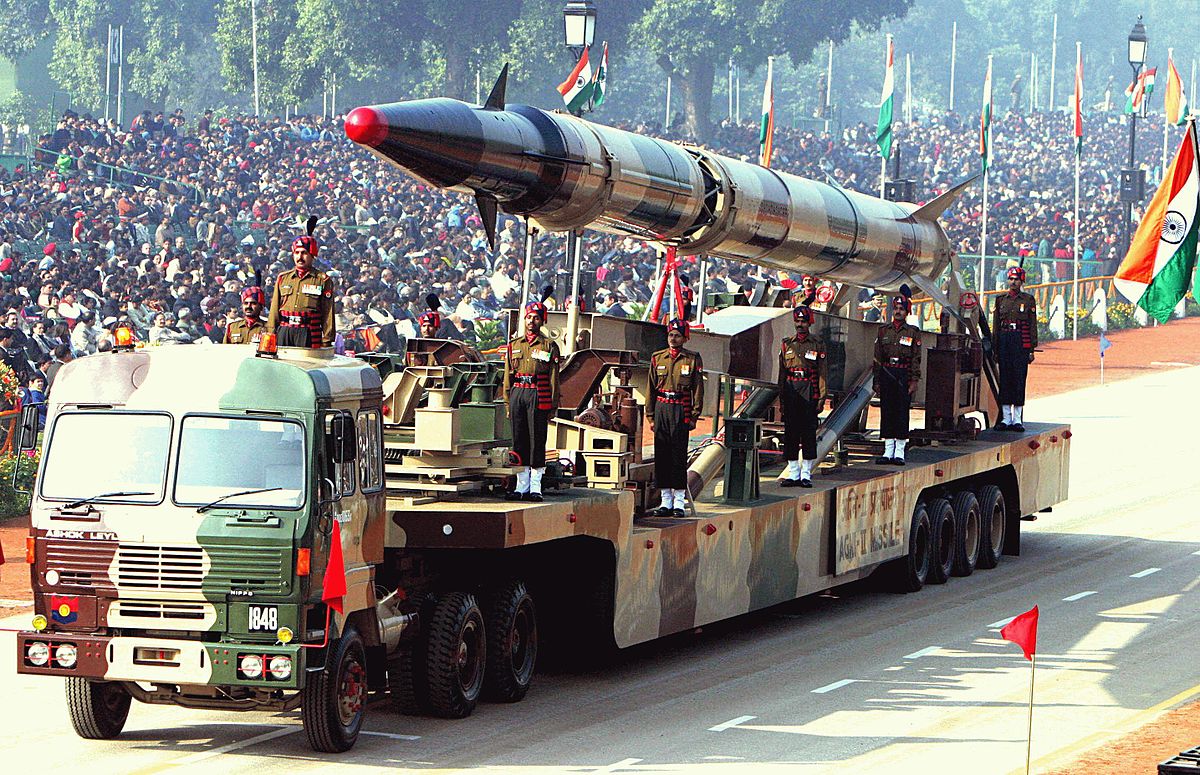
When it comes to nuclear testing, the word ‘no’ has been said by many states, many times. But as we approach the 20th anniversary of the Comprehensive Nuclear-Test-Ban Treaty (CTBT)’s entering into signing this week, whether this ‘no’ will convert to ‘never’ remains to be seen. In this regard, the United States’ push for the CTBT through a United Nations Security Council (UNSC) resolution, which will “reinforce norms against nuclear testing; underscore the value of the 1996 CTBT and also the international monitoring system to detect clandestine testing,” may be an important step. However, to turn the CTBT into reality, the eight states holding out on the CTBT, especially India and Pakistan, would need to reconsider their stance.
History
The CTBT has been signed by 183 states and ratified by 166. However, in order to turn this de facto moratorium into de jure moratorium, the 44 states that are listed under Annex 2—states possessing nuclear technology—need to ratify the Treaty in order to ensure it is entered into force. Though 36 Annex 2 states have ratified the Treaty, the United States, China, Egypt, Iran, and Israel have not, while North Korea, India, and Pakistan have not even signed it.
Perspectives from India
Due to India’s desire for Nuclear Suppliers Group (NSG) membership to attain a legitimate right over civil nuclear trade, New Delhi is under pressure to ratify the CTBT because most NSG member states are party to it (except the United States). However, India may not sign because:
- The CTBT bans all nuclear explosions, in consequence hindering both the initial development of nuclear weapons as well as significant enhancements (h-bomb). But India, ironically, is reportedly engaged in the development of a thermonuclear city (bomb);
- India has made its stance on the CTBT very clear in the past, saying India will not sign the treaty, “not now, nor later;”
- India has said that it wants to retain its nuclear testing option “if the international situation requires;”
- India is already enjoying enough benefits from the Indo-U.S. nuclear deal, such as dual use technology and reactors;
- Even though most NSG states have signed the CTBT, Indian analysts have argued that signing the CTBT as a pre requisite for India’s membership into the NSG is a “non issue.”
Views from Pakistan
While analyzing Pakistan’s stance on the CTBT, three factors, as identified by nuclear expert Dr. Zafar Nawaz Jaspal, are important: objective/scope of the CTBT, scientific maturity of Pakistan’s nuclear weapons program, and reciprocity in signing of the CTBT. Historically, Pakistan has been in support of the CTBT objective and its formulation process, indicated by its vote for a draft of the treaty presented in the United Nations General Assembly (UNGA) in 1996.

However, Pakistan’s reluctance on signing the CTBT stems from its concerns over India’s growing capabilities such as its missile defense shields, sea-based missiles, ICBM development, and it reportedly developing a uranium enrichment complex in southern India. As Islamabad’s stand on CTBT is mainly dependent on India, it has once again offered a mutual nuclear test ban arrangement to New Delhi, which, if accepted, would mean a legally binding bilateral agreement between the regional nuclear rivals. Even though India has rejected a similar proposal from Pakistan in the past, New Delhi should consider it seriously, especially in light of its desire for NSG membership. Realistically, Pakistan might sign the CTBT keeping the ratification by India as a pre-requisite, which would potentially happen after U.S. and Chinese ratification.
There is also the belief that Pakistan must achieve the technical capability to test nuclear weapons at an advanced level through nuclear simulation tests before signing the CTBT.
President Obama’s UNSC Resolution
If the treaty enters into force, it would strengthen global strategic stability and disarmament efforts, and would be in the interest of the non-proliferation regime. However, for the future of the treaty, the foremost responsibility lies on the shoulders of two permanent members of the UNGA, the United States and China. Ratifying the CTBT is unmistakably in U.S. national security interest. However, despite the Obama administration identifying the CTBT ratification as a top priority seven years ago, political complexities such as an endorsement from the Senate still plague the initiative. In this regard, President Obama’s proposed UNSC resolution has led to a re-opening of the CTBT debate in the United States as well as globally.
Concluding Thoughts
During the ninth round of the Pakistan-US Security, Strategic Stability, and Nonproliferation (SSS&NP) Working Group recently, Pakistan voiced its support of CTBT’s objectives and assured that it would not be the first to resume nuclear testing in the region. Additionally, the United States warmly welcomed Pakistan’s recent non-testing proposal to India. On the other hand, India has been mum on the CTBT recently, and has not even responded to Pakistan’s offer of a bilateral non-testing arrangement. The ball, thus, is in India’s court.
Editors’s note: With the 20th anniversary of the Comprehensive Nuclear-Test-Ban Treaty (CTBT)’s entry into signing on September 24 and in light of the United States’ upcoming United Nations resolution, SAV contributors explore whether the CTBT is still relevant today and why, how the stance of India and Pakistan–two of only three Annex 2 states that haven’t signed the treaty—has evolved over the years, and circumstances under which India and Pakistan would sign the treaty. Read the entire series here.
***
Image 1: Official CTBTO Photostream, Flickr
Image 2: India’s intermediate-range ballistic missile Agni-II (Antonio Milena (Abr), Wikimedia)


